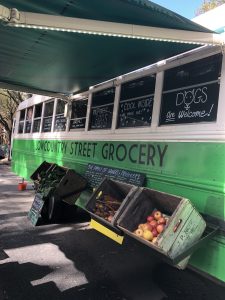In the NPR article “Suffering From Nature Deficit Disorder? Try Forest Bathing”, author Marcelo Gleiser reports on the findings Dr. Qing Li has found about the health benefits of the Japanese practice of shinrin-yoku, which can be described as “forest bathing”. Gleiser explains that in today’s society, approximately 54% of the world population lives in an urban area. While living in an urban area brings employment opportunities, social connections, and cultural experience, it also limits the ability of urban residents to experience nature and make environmental connections. There are widely felt effects of air, noise, and light pollution in urban areas. Gleiser reports a statistic that was found by an EPA study. According to the EPA, “Americans spend approximately 90% of their time indoors, where the concentration of air pollutants can be 2 times to 5 times higher than outdoors”.
Dr. Qing Li has found the answer to this issue that more than half of the world’s population is experiencing. In his new book, “Forest Bathing: How Trees Can Help You Find Health and Happiness”, Dr. Li provides his findings (backed by research data) that spending time in nature, such as in forests, parks, and other green areas, can reduce common health problems such as stress, anxiety, depression, and anger. His scientific findings conclude that spending time with trees and in green spaces result in reduced levels of the stress hormone, cortisol. Other health benefits that come from spending time in these natural settings include increased energy levels (by more than 30%), sleep improvement (by 15%), immune system improvement, better cardiovascular health, and improved parasympathetic system response. Additionally, practicing shinrin-yoku results in a general better sense of well-being. Dr. Li says that those who live in large cities should not panic though, if their location doesn’t provide access to large forests. He says that even going for regular walks in a park, having house plants, and practicing aromatherapy using tree oils can show the same health benefits. The practice of shinrin-yoku can be done by anyone, no matter their location, and can result in important health benefits for those who make time to connect with trees and nature.
I thought this article was very interesting because it relates to my personal connection with nature. For the past nine summers I have spent my summers on an island in the middle of Lake Winnipesaukee in New Hampshire. Being surrounded by trees on the island is very calming, and improves my well-being during the summer. I feel very connected to nature during the summer, and I try to incorporate this feeling into my life in Charleston as a student in an urban area. I have flowers in my apartment and I go for regular walks and runs down to the Battery and around Colonial Lake. Being near the water and surrounded by trees and plants provides a sense of shinrin-yoku during the stressful school year. I think that other students should try to incorporate shinrin-yoku into their lives, because even the smallest connections with trees and nature have great health improvements. It is a simple thing to do to have a house plant or go for a walk, and doing so can relieve some of the stress and anxiety that we feel as students. I believe that if more students focused as much on self-care as they do on school work, we would all feel less stress, and have a greater sense of well-being in the busy lives that we lead.
Link to article: https://www.npr.org/sections/13.7/2018/04/04/599135342/suffering-from-nature-deficit-disorder-try-forest-bathing











